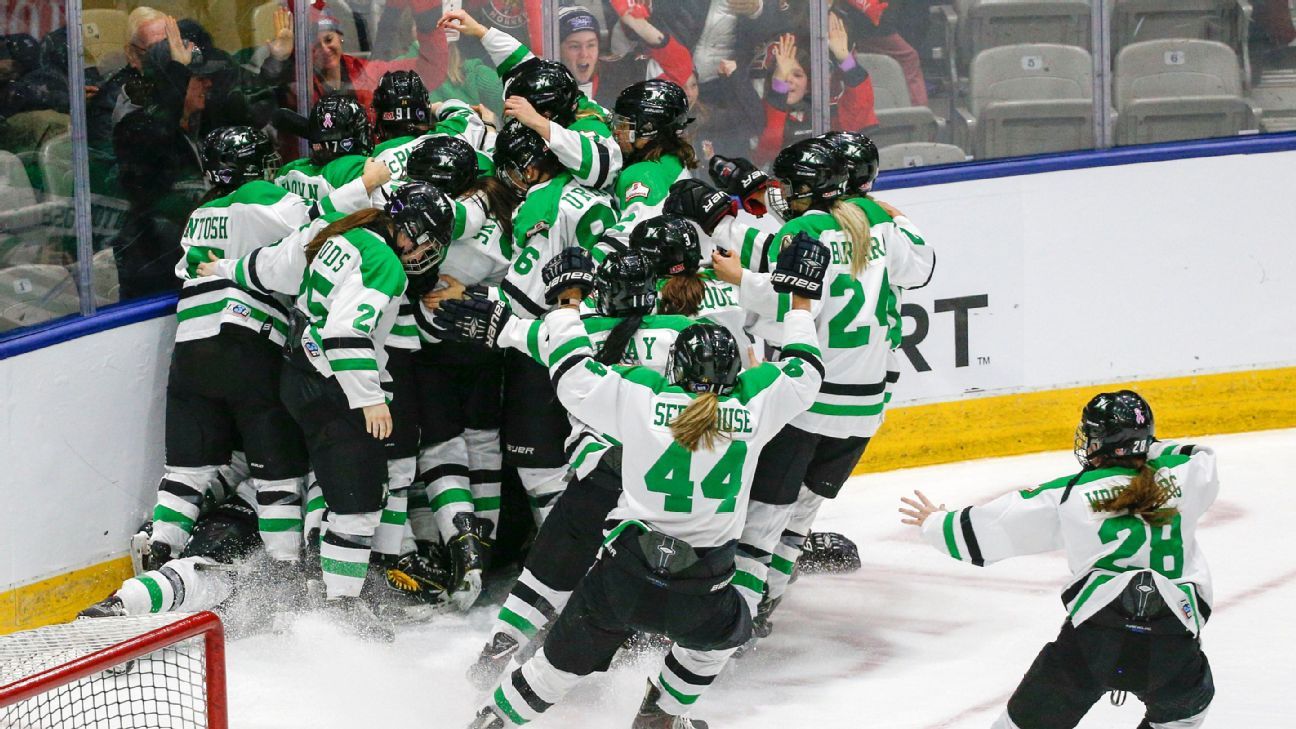The Canadian Women’s Hockey League will fold in May, the league announced on Sunday morning, news that sent shock waves across the hockey community.
The CWHL, founded in 2007, was home to some of the top players in the world, including Team USA’s Hilary Knight and Canada’s Marie-Philip Poulin. The news comes a week after the league’s Clarkson Cup had a record 175,000 fans tune in as the CWHL brokered a last-minute deal with NHL Network to stream the game to a United States audience. There were some rumblings that the league had been low on cash, though the news that it was ceasing operations was shocking, both for the timing and magnitude.
“Unfortunately, while the on-ice hockey is exceptional, the business model has proven to be economically unsustainable,” the league said in its news release.
On Sunday morning, several CWHL players tweeted out coordinated statements: “This morning we were informed the CWHL is folding. As players, we will do our best to find a solution so this isn’t our last season of hockey but it’s hard to remain optimistic. #NoLeague”
In 2017, the CWHL began paying its players for the first time. The range for players last season was $2,000 to $10,000 Canadian. “We don’t even often refer to it as a salary because in my mind, it’s not really necessarily [a] big enough number to be called a salary,” interim commissioner Jayna Hefford told ESPN earlier this month. “So I really look at it like a stipend for players to reimburse expenses on their end.”
Ever since the U.S.-based NWHL debuted four years ago, there had been a call to merge the two leagues. NHL commissioner Gary Bettman has gone on the record several times to say that he doesn’t want to intervene with either league as long as they both exist in their current states — mainly because the league doesn’t want to look like its choosing sides, or swooping in as a “big brother” to save the day, according to NHL sources. However with one league folding, the NHL may now step in and have a meaningful contribution to women’s hockey.
The NHL financially contributed to both the CWHL and NWHL last season, though an industry sources says the amount paid to each league was “less than six figures.”
The CWHL had six franchises, including one based in Shenzhen, China, which was independently owned and paid its own operating expenses. It was believed when the league expanded to China in 2017 the deal would help make the league more financially viable.
The league did not disclose attendance figures for the 2018-19 season, nor does it sell merchandise.
Hefford, a recent Hockey Hall of Fame inductee, was serving as the interim commissioner of the CWHL. (She is a CWHL alumnus, and the league’s most outstanding player award is named in her honor.) The CWHL is not for profit, an important distinction from the NWHL. The CWHL has an 11-member board of directors that meets monthly. According to Hefford, the board of directors approves a budget at the beginning of the season, and after that, there isn’t much flexibility.
“Founded in 2007 by players and members of the community, the League’s mandate was to grow the sport of women’s hockey, and to that extent it more than achieved its goal,” the league said in a news release, which praised Hefford’s leadership this season as the league “have seen a new level of success, new energy and credibility to the game.”
Asked earlier this month what an ideal professional women’s hockey league would look like, Hefford told ESPN: “An ideal league to me would be four to six teams. The players would be paid a living wage, whatever that is described as. It’s certainly not going to be hundreds of thousands, but it’s a salary that you can live on in a major city because that’s more than likely where the teams will be. You’d want the best players in the league. I think that having the NHL involved would be a big part of that. I wouldn’t say it is the NHL, but having their involvement and their brand and resources is important to it. That’s where I see the game going.”

